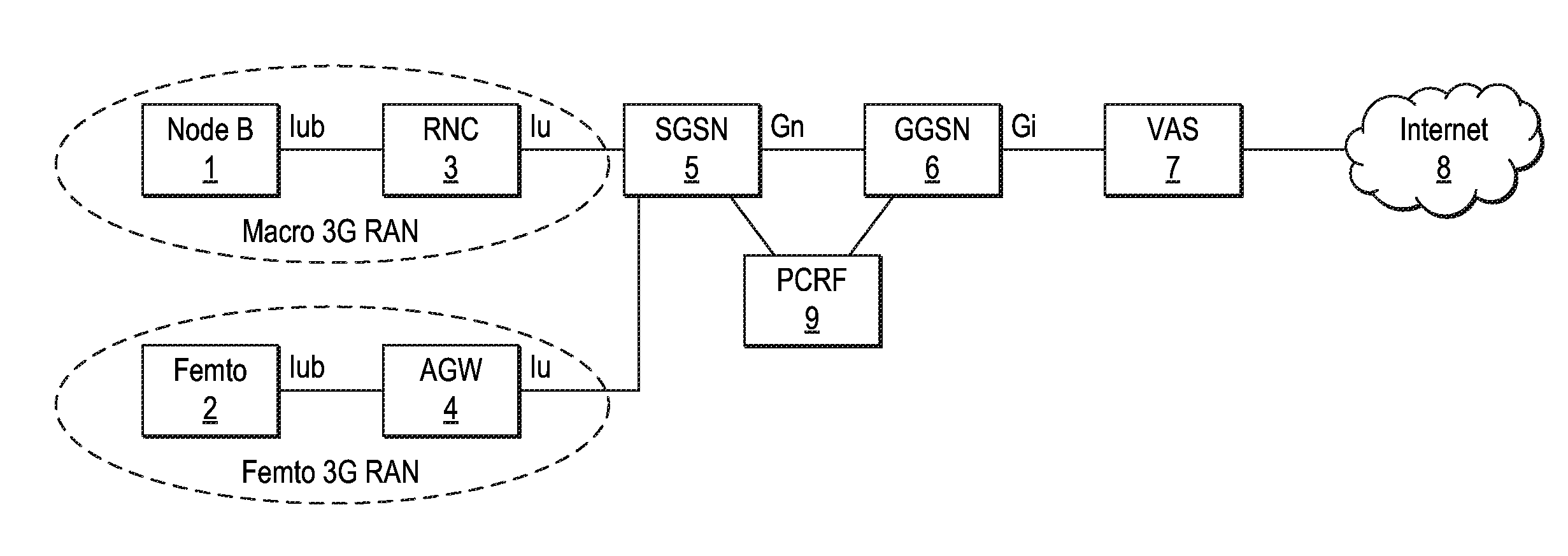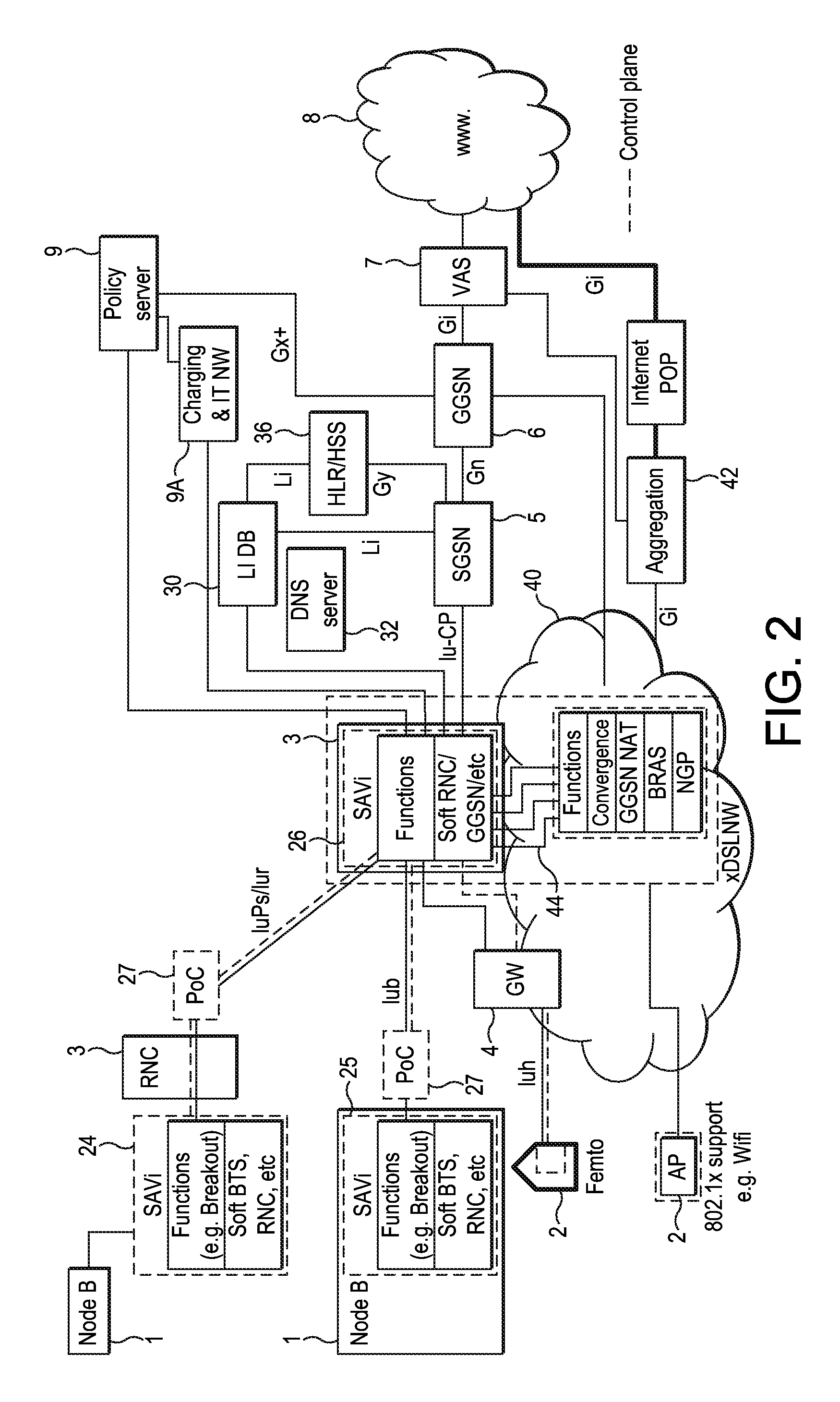Telecommunication networks
a technology of telecommunication networks and mobile networks, applied in the field of mobile telecommunication networks, can solve the problems of increasing data traffic jams, increasing the cost of supporting this data volume, and limiting the capacity of mobile networks,
- Summary
- Abstract
- Description
- Claims
- Application Information
AI Technical Summary
Benefits of technology
Problems solved by technology
Method used
Image
Examples
case 2
[0394]However there are a number of areas where there are issues for the routeing of Uplink packets to the Source access node platform 700 / 800, and these are:[0395]Case 1 When a UE arrives on a Target platform 700 and an existing connection is open for the UE, the target platform 700 does not know whether the another platform 700 is performing any operations on the data stream. The Target platform 700 must route any uplink packets for connections already established prior to arriving on the Target platform 700 via the platform 700 hosting the application. However the Target platform 700 is unaware to which platform 700 the uplink data should be routed (as there could be multiple for an active & mobile subscriber).[0396]Solution 1: the platform 700 hosting the application would need to provide information about the ongoing connection controlled by the application, e.g. the source / destination addresses of the connection; (assumes connection information does not change over time . . . ...
PUM
 Login to View More
Login to View More Abstract
Description
Claims
Application Information
 Login to View More
Login to View More - R&D
- Intellectual Property
- Life Sciences
- Materials
- Tech Scout
- Unparalleled Data Quality
- Higher Quality Content
- 60% Fewer Hallucinations
Browse by: Latest US Patents, China's latest patents, Technical Efficacy Thesaurus, Application Domain, Technology Topic, Popular Technical Reports.
© 2025 PatSnap. All rights reserved.Legal|Privacy policy|Modern Slavery Act Transparency Statement|Sitemap|About US| Contact US: help@patsnap.com



